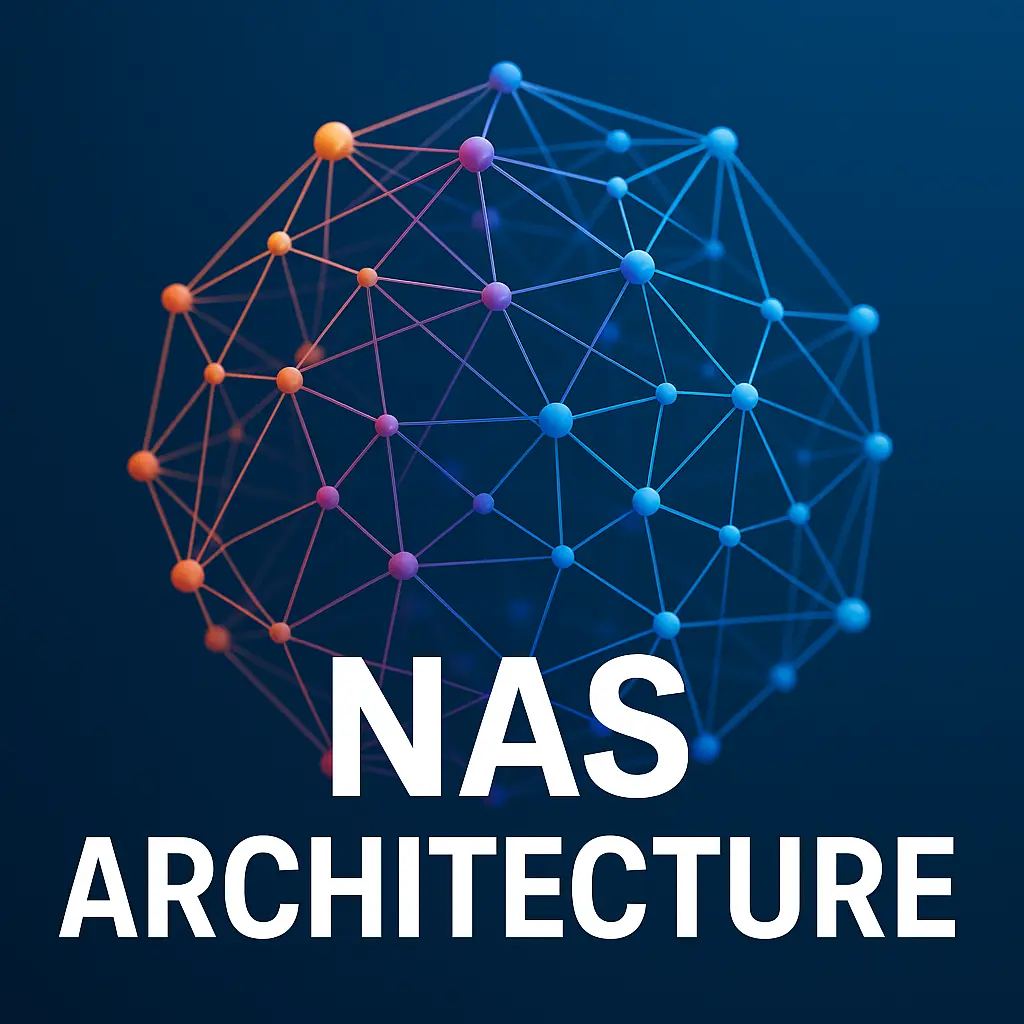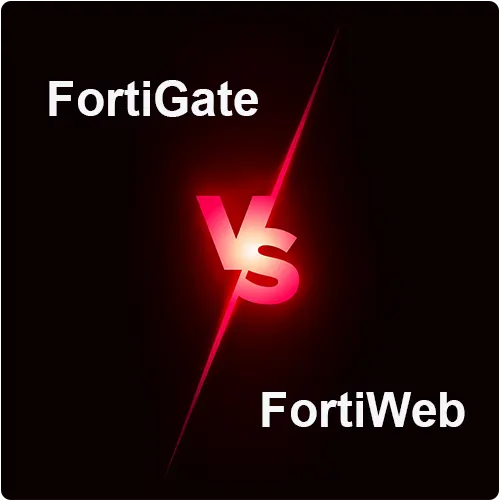FortiGate vs FortiWeb: Why Your Choice Matters?
Cyber threats are evolving at an alarming pace, and organizations must proactively address vulnerabilities to protect their critical assets. Selecting the right security tools plays a vital role in safeguarding networks, applications, and sensitive data. FortiGate and FortiWeb are designed to mitigate different types of risks, making it essential to understand their core functions before making a decision.
FortiGate is primarily a next-generation firewall (NGFW) that provides comprehensive protection for network infrastructure. It excels at managing traffic flow, detecting and blocking network-based threats, and ensuring secure connectivity for users and devices. With advanced features like intrusion prevention systems (IPS), VPN capabilities, and application control, FortiGate is an ideal choice for securing networks at the periphery.
On the other hand, FortiWeb is a dedicated web application firewall (WAF) tailored to protect web applications and APIs from targeted attacks like SQL injection, cross-site scripting (XSS), or bot-driven exploits. It focuses on preserving the integrity of web-facing assets, ensuring compliance with industry regulations, and maintaining customer trust. FortiWeb is an indispensable tool for businesses relying heavily on web applications and online services.
Understanding the interplay between these solutions is key to creating a resilient security posture for your organization. While their primary focus areas differ, FortiGate and FortiWeb can complement each other to provide a robust, layered defense against cyber threats.
With increasingly sophisticated cyberattacks, a one-size-fits-all approach to security no longer cuts it. Deciding between FortiGate and FortiWeb depends on understanding your organization’s vulnerabilities. Do you need to secure your entire digital infrastructure? Or do you need specialized protection for your web applications and APIs? The choice influences your security posture, resource allocation, and long-term operational success.
FortiGate Overview
FortiGate is a Next-Generation Firewall (NGFW) and Unified Threat Management (UTM) solution. It’s designed to offer broad-spectrum protection across your network environment, making it perfect for enterprises that manage complex, multi-cloud, and hybrid infrastructures.
Key Features of FortiGate:
Network Security
FortiGate provides a robust firewall, VPN capabilities, and intrusion prevention systems (IPS) designed to protect your network perimeter and internal segments against advanced threats.
Application Control and Web Filtering
Block malicious websites, restrict access to unauthorized applications, and ensure employee productivity through application-based controls and URL filtering.
Advanced Threat Protection
FortiGate employs cutting-edge technologies like sandboxing and antivirus scanning to detect and mitigate unknown malware and zero-day threats.
Typical Use Cases for FortiGate:
Enterprise Network Security: Protect large-scale networks with advanced security features, including segmentation to limit lateral threats.
Branch Office and Remote Access Protection: Secure distributed teams and remote workers with integrated VPN and SD-WAN solutions.
Multi-Cloud Security: FortiGate’s capabilities scale across virtual and cloud environments to secure hybrid infrastructures.
Looking for FortiGate in your region? Contact a trusted Dubai FortiGate Distributor to explore deployment options tailored to your network’s unique needs.
FortiWeb Overview
FortiWeb is a dedicated Web Application Firewall (WAF) aimed at safeguarding web applications, APIs, and the vulnerabilities inherent to application-layer attacks. Unlike FortiGate, which focuses on general network security, FortiWeb zeroes in on defending web servers and app infrastructure.
Key Features of FortiWeb:
Protection Against OWASP Top 10 Vulnerabilities
FortiWeb shields your applications from SQL injection, cross-site scripting (XSS), and other vulnerabilities topping the OWASP list.
Bot Mitigation and DDoS Protection
Stop automated threats and Distributed Denial of Service (DDoS) attacks in their tracks, ensuring your web services remain operational.
API Security and SSL/TLS Inspection
FortiWeb adds advanced security safeguards for APIs and encrypts communication channels to prevent unauthorized access.
Typical Use Cases for FortiWeb:
Securing Web Applications and APIs: Ensure robust protection for e-commerce platforms, SaaS offerings, and web apps.
Compliance Requirements: Meet regulatory standards like PCI DSS by safeguarding sensitive data.
Defense Against Application-Layer Attacks: Prevent attacks targeting the web and app layers specifically.
Looking for FortiWeb in your region? Contact a trusted Dubai Fortiweb Distributor to explore deployment options tailored to your network’s unique needs.
When to Use FortiGate vs FortiWeb?
Choosing between FortiGate and FortiWeb depends on your organization’s specific security needs, priorities, and infrastructure architecture. If your primary concern is protecting the network perimeter, monitoring traffic, and ensuring secure connectivity for users and devices, FortiGate is the solution you need. Its comprehensive feature set makes it vital for maintaining a secure digital foundation across hybrid or on premises environments.
Alternatively, if your business relies heavily on web applications and requires advanced measures to combat targeted application-layer attacks, FortiWeb is the optimal choice. Its tailored approach to web application security ensures that online platforms and APIs remain resilient and trustworthy in the face of complex and evolving threats.
For many organizations, leveraging both solutions within an integrated framework offers the best of both worlds. By combining the broad network protection of FortiGate with the focused application layer defense of FortiWeb, businesses can establish a multi layered security strategy that provides unparalleled protection against modern cyber threats.
Table of Fortigate vs Fortiweb
| Feature | FortiGate | FortiWeb |
| Primary Function | Next-Generation Firewall (NGFW) | Web Application Firewall (WAF) |
| Scope of Protection | Network security (Layers 3-7) | Web application security (Layer 7) |
| Key Capabilities | Firewall, IPS, VPN, Application Control, Web Filtering, SD-WAN | WAF, DDoS Protection, Bot Management, API Security, Data Loss Prevention (DLP) for web traffic |
| Threat Protection | Network-level threats (viruses, malware, intrusions) | Application-level threats (SQL injection, cross-site scripting, OWASP Top 10) |
| Deployment | Network perimeter, internal segmentation, remote offices | In front of web servers, cloud-based web applications |
| Use Cases | Securing entire network infrastructure, branch office connectivity, data center protection | Protecting web applications and APIs from attacks, ensuring compliance, preventing data breaches |
| Focus | Network security, all network traffic | Web application security, web-based traffic |
| Management | FortiManager | FortiManager |
Key Differences Between FortiGate and FortiWeb (FortiGate vs FortiWeb)
Now that we’ve covered their individual functionalities, it’s essential to explore how FortiGate vs FortiWeb vary fundamentally.
1. Scope of Protection
- FortiGate: Primarily protects networks, delivering comprehensive coverage for firewalling, IPS, and URL filtering.
- FortiWeb: Focused exclusively on web applications and APIs, providing unique features to defend against application-layer threats.
2. Deployment Scenarios
- FortiGate: Ideal for network perimeter security, segmentation within large organizations, and multi-cloud infrastructure.
- FortiWeb: Best deployed for web server and API protection, particularly for businesses operating in industries like retail, finance, and technology that rely heavily on online platforms.
3. Integration and Management
- FortiGate: Supports centralized management using FortiManager and real-time threat visibility via FortiAnalyzer.
- FortiWeb: Features specialized management capabilities tailored for web application security.
Understanding these differences simplifies identifying the solution best suited for your requirements.
When to Combine FortiGate and FortiWeb
After exploring FortiGate vs FortiWeb, it becomes clear that although distinct, they frequently complement each other, offering a layered security framework with minimal overlap. Here’s how they work together:
- Enhanced Security Layers: FortiGate protects the broader network infrastructure while FortiWeb hones in on application-level protection.
- Compliance Assurance: FortiGate ensures network compliance, while FortiWeb handles industry-specific regulations like PCI DSS or GDPR.
- Multi-Vector Threat Defense: Build a fortress against threats at all stages from network-layer attacks (e.g., DDoS) to application-based vulnerabilities like XSS and injection attacks.
For a practical example, an enterprise with a public facing e-commerce portal may use FortiWeb to safeguard web applications while employing FortiGate to manage access control and the flow of data between backend systems.
Why You Should take Fortinet Solutions Seriously?
Cyber threats are advancing at a breakneck pace. Relying solely on traditional firewalls or basic security appliances puts your business at risk. By integrating products like FortiGate and FortiWeb, you adopt a proactive rather than reactive security posture, giving your organization the resiliency to handle today’s sophisticated threats.
Finding the Right Fit
Before choosing between FortiGate and FortiWeb, evaluate your organization’s specific needs. Do you require comprehensive perimeter security spanning multiple branches? Or is your focus on securing a high-traffic web app? Often, the best approach includes both solutions working together.
Need help sourcing Fortinet products for your specific use case? Contact a Dubai Fortinet Distributor to get expert advice and access tailored cybersecurity packages.





